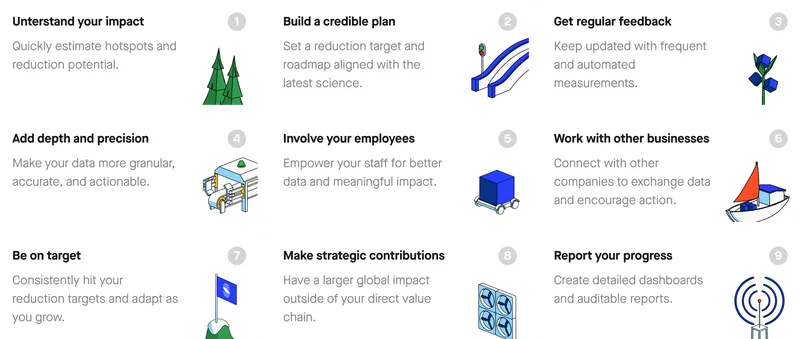The Carbon Track methodology lays out nine steps that define a realistic science-based climate strategy and guide organizations to take the most impactful reduction action.
As we’re getting ready for COP27, it brings me back to the previous conference in Glasgow, where the enthusiasm to join forces for global decarbonization was palpable. For many companies, it translated into setting ambitious climate targets. A year on, some have started reducing, others have a plan, and a majority remain stuck in the realm of commitments.
That’s why we’re launching the Carbon Track. A hands-on methodology that maps out the key ingredients in any good climate strategy, including how to build a realistic reduction roadmap, what reporting frameworks to use, and which stakeholders to involve.
Created with our team of experts, the Carbon Track is split into nine areas that should be addressed in your climate strategy and shares how to take meaningful action based on your priorities, bandwidth, and maturity – and scale your efforts from there.

As part of our mission to democratize carbon management, we’re making this methodology freely available via our Carbon Track assessment. Any organization can now get a personalized analysis of their reduction plan and access a library of resources to take action with their teams, partners, and portfolio companies.
Because carbon isn’t a game. And there are no quick shortcuts to propel yourself to the next level.
To succeed, companies need to graduate from pipe dream targets and panacea offsets to embrace the full spectrum of climate action. The ones that do, will realize that it’s not just about legal compliance and risk management.
Carbon is a creative force driving innovation and sustainable growth – helping you become a forever company.
Want to know more?
📊 Find out how Sweep works
🌍 Learn how to turn your climate strategy into a success driver for your business




